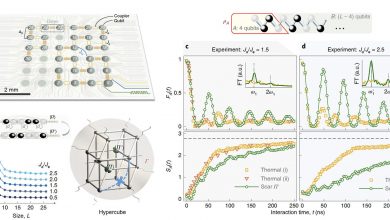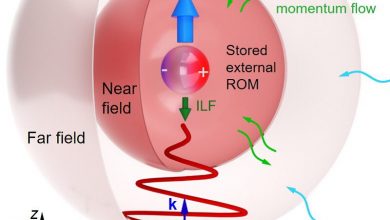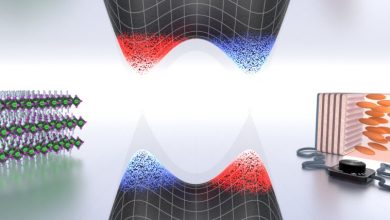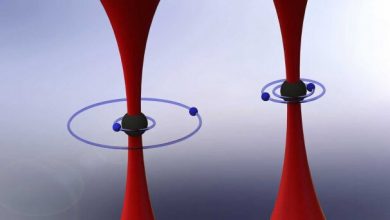Researchers resolve decades-long debate about shock-compressed silicon with unprecedented detail
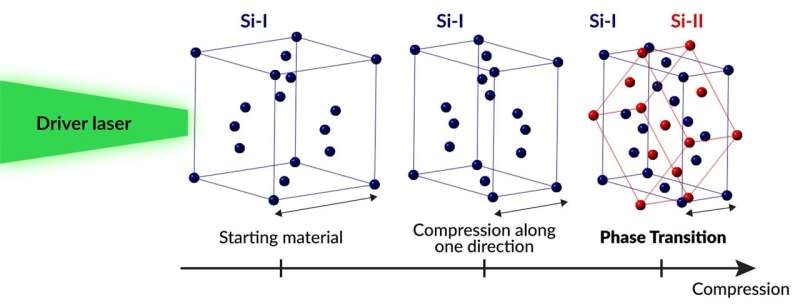
Silicon, an element abundant in Earth’s crust, is currently the most widely used semiconductor material and is important in fields like engineering, geophysics and plasma physics. But despite decades of studies, how the material transforms when hit with powerful shockwaves has been a topic of longstanding debate.
“One might assume that because we have already studied silicon in so many ways there is nothing left to discover,” said Silvia Pandolfi, a researcher at the Department of Energy’s SLAC National Accelerator Laboratory. “But there are still some important aspects of its behavior that are not clear.”
Now, researchers at SLAC have finally put this controversy to rest, providing the first direct, high-fidelity view of how a single silicon crystal deforms during shock compression on nanosecond timescales. To do so, they studied the crystal with X-rays from SLAC’s Linac Coherent Light Source (LCLS) X-ray laser. The team published their results in Nature Communications on September 21st. What they learned could lead to more accurate models that better predict what will happen to certain materials in extreme conditions.
“This is a great example of an experiment that’s necessary to better understand certain materials,” said SLAC scientist Arianna Gleason, who was the principal investigator. “You have to start simple, with single crystals, to know what you’re tracking and understand it in really detailed ways before you can build up complexity to give way to, say, the next semiconductor of the 21st century that will allow the electronics industry to continue the remarkable progress seen in the past 50 years.”
Time to relax
When researchers shock compress samples, they are essentially squeezing the material along one direction. This creates so much stress in that single direction that the material needs to find a way to relax. In many materials, this normally leads to plasticity, an irreversible deformation driven by the generation and diffusion of defects, tiny imperfections in the material’s atomic arrangement.
In earlier studies, researchers interpreted the different features seen in shock-compressed silicon as a signature of this plastic deformation. But molecular simulations suggested a different, defect-free deformation.
“In our experiment we show that in the case of silicon, this conventional plasticity is not the main relaxation mechanism,” said Pandolfi, who led the analysis. “Rather than the accumulation of defects, silicon prefers to relax through the collective motion of its atoms and transformation into a high-pressure structure. This had been predicted by calculation but until now was very difficult to prove experimentally.”
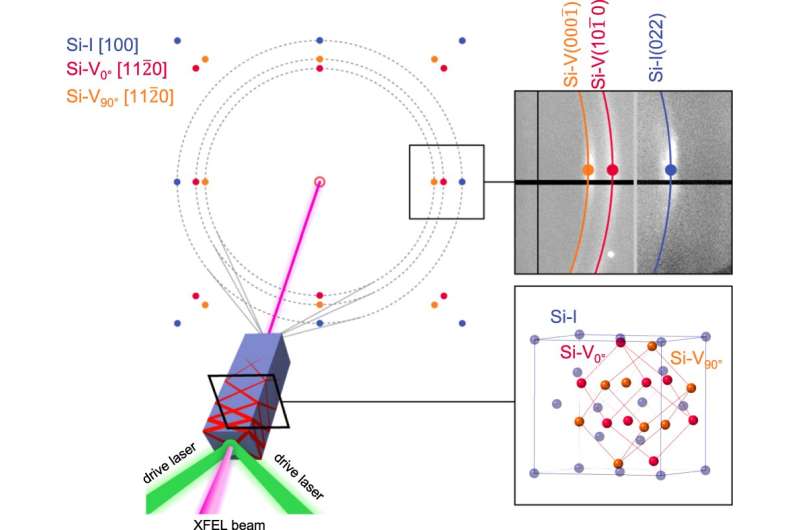
Apples to apples
At the Matter in Extreme Conditions (MEC) instrument at LCLS, the researchers first sent a shockwave through the silicon sample with a carefully tuned optical laser, allowing them to reach extremely high temperatures and pressures. Next, they hit the sample with ultrafast X-ray laser pulses from LCLS. Some of the X-rays then scattered into a detector, allowing the researchers to observe how the sample’s atoms rearranged in response to the increase of pressure and temperature during the shockwave propagation on ultrasmall, ultrafast scales.
Previous studies focused on bulk response in samples consisting of many small crystals in different orientations. This allowed researchers to determine the average behavior of the material but did not allow them to get the complete picture. Working with a single crystal sample allowed the researchers to follow how the crystal transformed at the atomic level.
“The success of this experiment was due to the incredible combination of sample quality and the X-rays from LCLS,” Pandolfi said. “We were able to access the fundamental materials science without having to factor in distortions due to the X-ray source or microstructural defects in the sample that could change how the material behaves. It’s much more of an apples-to-apples comparison with the theory: it allowed us to visualize what happens in what is as close as possible to a model system.”
Springboard technique
The ability to gain atomistic insight into how materials respond to stress is informing the design of the next generation of X-ray facilities. The Matter in Extreme Conditions Upgrade (MEC-U) will produce unprecedented pressures combined with higher energy X-rays to probe a much wider array of conditions, enabling complex systems of direct relevance to future technologies to be studied. Examples range from the semiconductor industry to fusion energy and the protection of satellites.
“We’re looking at this as a springboard technique development,” Gleason said. “It can be leveraged for many different applications beyond silicon, really pushing the frontier for new materials and helping us illuminate the path toward engineering these materials to benefit humanity.”
Getting the physics right
To follow up on this study, the researchers plan to try the technique on different samples with more complex compositions to better understand foundational materials relevant in industry as well as Earth and planetary sciences.
“This new data really shows where the plasticity models that are used to predict how materials will behave are getting the physics right and where we need to make changes,” Gleason said. “There are other materials that respond in similar ways that are often used for industrial purposes. For instance, high-performance coatings to withstand extreme conditions such as micro meteorite impacts on space vehicles. Understanding how these materials degrade over time in this environment will help us figure out how to prevent that in the future. It all starts with having accurate, atomic-level models.”
The researchers also plan to conduct more silicon experiments to see what happens when they compress the sample along different orientations and figure out if where they apply the strain changes how the sample deforms. For Pandolfi, the possibility of uncovering more unknowns about this ubiquitous and useful element is one of the most exciting aspects.
“I have such a soft spot for silicon. Anything new I can discover about it is so interesting to me,” Pandolfi said. “Sometimes I have to stop and think about what we’re talking about: we’re looking at the motion of atoms at high pressure over the course of billionths of a second. The fact that we can get such clear information on a phenomenon that people have been investigating for such a long time is just mind-blowing.”
Conclusion: So above is the Researchers resolve decades-long debate about shock-compressed silicon with unprecedented detail article. Hopefully with this article you can help you in life, always follow and read our good articles on the website: Peto.info
